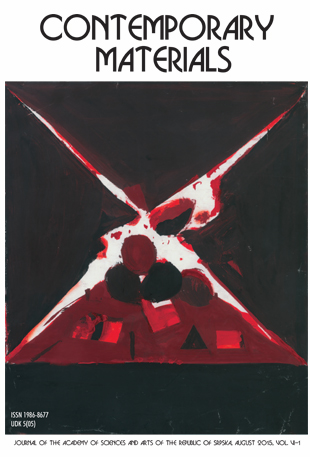MEASUREMENT OF RADON ACTIVITY CONCENTRATION IN BUILDING MATERIALS USED IN BOSNIA AND HERCEGOVINA
DOI:
https://doi.org/10.7251/COMEN2001051AAbstract
Man is continuously exposed to ionizing radiation because of the presence of naturally occurring radioactive materials (NORM) in the environment. Various technological processes of processing and using of materials that contain natural radionuclides generate materials of enhanced natural radioactivity (TENORM). The largest contribution to irradiance with natural sources of ionizing radiation is the exposure of the population to indoor radon. This gas originates from the radioactive decay of 226Ra and 224Ra that are present in the soil under houses and building materials. Depending on the type of building materials, indoor exposure to radon at dwellings and workplaces can be over a thousand times greater than in outdoor space. In Bosnia and Herzegovina, no valid and comprehensive radiological studies on the building materials have been performed that would guarantee for their dosimetric safety use for installation in residential and industrial buildings, highways, as well as their application for other purposes. The quantification of the radon levels that comes from building materials is a necessary and very important part of the global protection of the population from ionizing radiation. This paper presents the first results of a study on the radon activity concentrations in building materials used in Bosnia and Herzegovina. Measurements were performedwith a professional Alpha GUARD system. The mean values of the activity concentration of the exhaled radon of investigated building materials varied from 10 Bqm-3 to 101 Bqm-3, radon exhalation rate values ranged from 77.0 mBqm-2h-1 to 777.7 mBqm-2h-1. Gamma dose rate was in the range 57–112 nSv h−1.
Keywords: building materials, radon activity concentration, radon exhalation rate, gamma dose rate.
